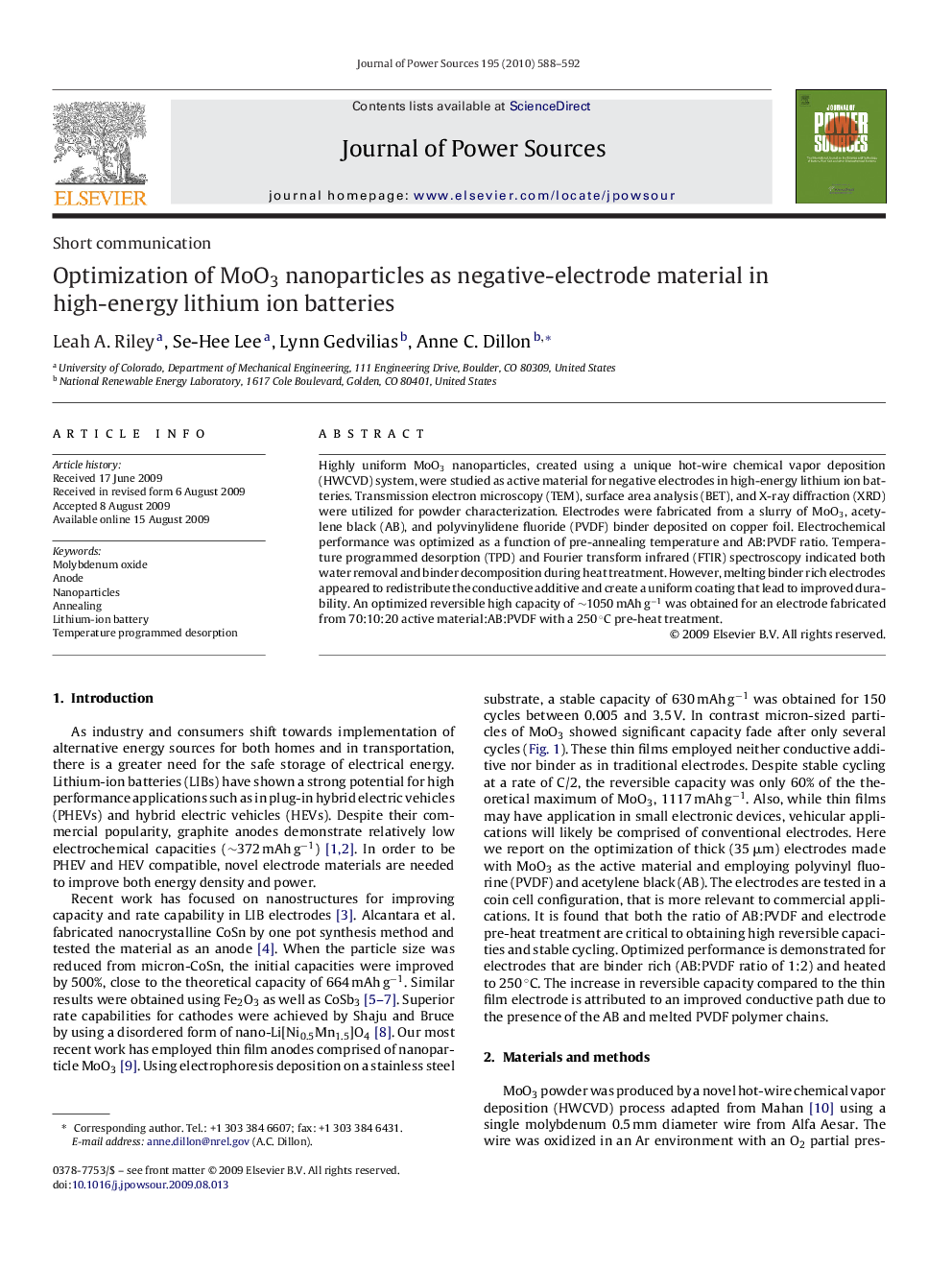| Article ID | Journal | Published Year | Pages | File Type |
|---|---|---|---|---|
| 1293909 | Journal of Power Sources | 2010 | 5 Pages |
Highly uniform MoO3 nanoparticles, created using a unique hot-wire chemical vapor deposition (HWCVD) system, were studied as active material for negative electrodes in high-energy lithium ion batteries. Transmission electron microscopy (TEM), surface area analysis (BET), and X-ray diffraction (XRD) were utilized for powder characterization. Electrodes were fabricated from a slurry of MoO3, acetylene black (AB), and polyvinylidene fluoride (PVDF) binder deposited on copper foil. Electrochemical performance was optimized as a function of pre-annealing temperature and AB:PVDF ratio. Temperature programmed desorption (TPD) and Fourier transform infrared (FTIR) spectroscopy indicated both water removal and binder decomposition during heat treatment. However, melting binder rich electrodes appeared to redistribute the conductive additive and create a uniform coating that lead to improved durability. An optimized reversible high capacity of ∼1050 mAh g−1 was obtained for an electrode fabricated from 70:10:20 active material:AB:PVDF with a 250 °C pre-heat treatment.
